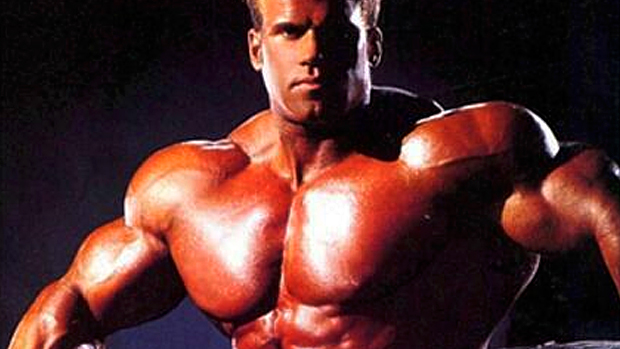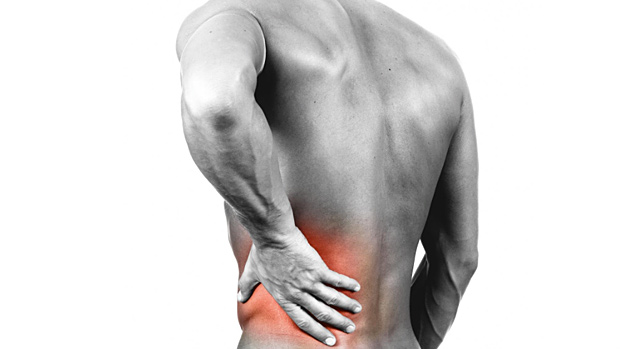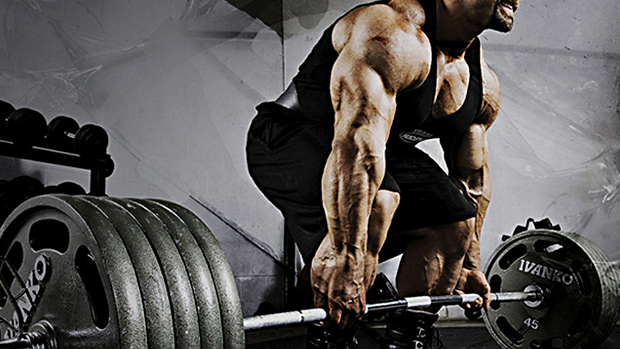Most trainees have the habit of waking up, shoveling down some Fruit Loops, and heading off to the gym before they've truly awakened. In other words, given the amount of prep work they've put into that particular workout, they might as well have left their Fozzie Bear jammies on and stayed in bed.
Sorry, but most dedicated, sincere athletes, especially when peaking on a given program, want to achieve the ultimate workout where their work capacity is at its maximum and they can achieve personal bests. Even though I've had plenty of positive feedback on the 1-6 Principle and the Maximal Weights training protocols, many readers want to know more about having better workouts on a consistent basis, hence this article.
Achieving the ultimate workout involves prep work. If you can't find the time, realize that your workout performance is likely to remain as tenuous as the weather. Here, in a nutshell, is what I have my athletes do before a workout (detailed explanations of each step follow below):
Step 1 At 5am, get your flabby butt out of bed. Stumble down to the kitchen and take a dose of acetyl-l-carnitine on an empty stomach.
Step 2 At 5:15am, poke your woman with a stick so that she'll get up and make you a power breakfast. If no woman is there — or you have one that can beat you up — get rid of the stick and make yourself the following meal:
• One lean "eye of the round" steak
• Four poached eggs
• Three fish oils capsules from Dale Alexander
• One GLA capsule
• One cup of strong green tea or "iron shoe" coffee*
• L-norephedrine or ephedra product of choice**
*"Iron shoe" refers to the way that I like to make coffee. Once it's brewed, I throw an iron shoe in the coffee pot. If it floats, it needs more coffee.
**Drug-tested individuals should skip the thermogenics because they're on most sport federations' lists of banned substances.
Step 3 At 6:15am, take one dose (a scoop) of Power Drive in six ounces of water and one serving of Ribose-C.
Step 4 At 6:16am, pretend that you're going back to bed but, instead of lying on the bed, lie on a spine roller for 15 minutes (I'll tell you how to get one later on in this article).
Step 5 At 6:45am, start your workout.
Ephedra
Sleep patterns: Some of you will have a hard sleeping after taking ephedra products. To combat this problem, take 2,000 mg of vitamin C at every meal until you go to bed in order to acidify the urine and augment the clearance of ephedrine.
Cramping: If you use a lot of caffeine with ephedrine, you may have a problem with cramping. If that's the case, you may want to increase the level of your mineral intake in your post-workout drinks, particularly potassium, calcium, and magnesium.
Supporting the adrenals: If you find that you're getting a lessened response to ephedra products, you may want to check your vitamin C and pantothenic acid intake. Furthermore, the herbs licorice and ginseng support the healthy function of the adrenal medulla.
In case you're one of those types who insists on an explanation for every piece of advice that comes your way, here it is:
Step 1 — Acetyl-l-carnitine
There's a good chance that ALC might increase dopamine activity in the brain. From an empirical standpoint, both Dr. Eric Serrano and myself have noticed increased strength performance in athletes who take a high dose of ALC prior to workouts, and many even report being more awake and focused.
Some authors have recommended L-phenylalanine, instead. But in my experience, I've found that its ergogenic effects are nothing in comparison to acetyl-l-carnitine.
My recommendation is that you use three grams of acetyl-l-carnitine on an empty stomach upon arising in the morning before you have breakfast. Anything less than three grams isn't worth it.
Interestingly, it seems that the more you use, the better. I've used as much as seven grams, with remarkable results. The trouble is that it's expensive. Twinlab makes a good product called ALC-Fuel (what else would it be called, coming from Twinlab?). It comes in 1,000-mg capsules.
Step 2 — Power breakfast meal
At breakfast, you want to have a meal that's rich in the amino acid tyrosine. That's why I prefer to base my breakfast around protein sources like ostrich, buffalo, venison, beef, and eggs. I even keep a small pen of these animals in the parking lot outside the office for quick access.
As you can see, I keep my morning carb intake at zero. I find that the energy response is greater this way for most individuals. If you're still hungry, increase the protein intake. If you can tolerate carbs well, you may want to add some slices of spelt bread, which is still low-carb and has a low glycemic index.
Choosing the right ephedra or l-norephedrine product
There are many ephedra formulas out there (and one l-norephedrine formula) that can help you achieve higher levels of maximal strength. Among the most effective are:
• Biotest MD6 (the l-norephedrine product)
• Champion Nutrition Thermadrol Extreme
• Advanced Genetics Thermatrene
• AST EPH 833
• Enzymatic Therapy Escalation
Some of the brands don't agree so well with my digestive tract. For example, themogenic products that contain ginseng have the physiological effect of a full glass of Third World water.
My personal favorite — among ephedra-based products — has to be Escalation from Enzymatic Therapy. The dosage of ephedrine (standardized from the herb ephedra) per tablet is 15 mg. Therefore, an athlete can more accurately adjust the dosage of that stimulant. This is good because there are wide differences in individuals on the amount of ephedrine that one can tolerate. A nutrition expert colleague of mine can take 15 mg of ephedrine and literally bounce off the wall, while I find that six times this dosage is what produces the best results for me.
However, you may find that, for example, the Thermadrol Extreme is what works best for your physiology. I suggest that you experiment with the various brands, but keep the brand constant for a given training cycle so that you can truly evaluate its ergogenic potential for you.
In the last few weeks, though, I've found that Biotest MD6, although designed as a fat-burning pill, is a wonderful workout stimulant. Unlike other products, MD6 contains l-norephedrine (pharmaceutical l-norephedrine, at that) instead of conventional ephedrine, which often causes undesirable side effects such as trembling, nervousness, and rapid heart rate. Likewise, it contains l-tyrosine which, in itself, can promote strength increases (as explained below). I personally predict that this product will soon make all conventional ephedrine-based products obsolete.
Herbal ephedrine products
If you choose to stick with conventional herbal ephedrine-based products, you should know that the ephedrine alkaloid content of plants varies considerably throughout the year and is influenced by harvesting and processing conditions.
You know why companies standardize for ephedrine alkaloids instead of ephedrine? Because that way, they can give you a different-strength product from batch to batch (or lot to lot) and still conform to their label claims. Everybody has tried Twinlab Ripped Fuel. Ever notice that sometimes it works better than others? One reason is that one lot may have more ephedrine per capsule than another. Likewise, the most abundant ephedra alkaloid is ephedrine, but other alkaloids such as norephedrine, pseudoephedrine, methylephedrine, and norpseudoephedrine can be found in the product that you choose to take.
That's another reason why two different brands of ephedrine products which supposedly contain the same amount of drug can have different effects. One popular brand has been found to have 25 mg of ephedrine per capsule, like its competitor, but the total amount of ephedrine-like alkaloids was near 60 mg., compared to 29 mg for the other brand! It's no wonder that some people report that they find one brand more effective than the other.
Step 3 — Power Drive and Ribose-C
Power Drive is a reflection of a whole new breed of supplements called neurotransmitter enhancers. Up until now, bodybuilding training methodology has spent all of its time trying to harvest the muscles while ignoring the central nervous system that hooks up the muscles. The trouble is that everything is controlled by the central nervous system, and we're not just talking about cognitive ability or learning mechanisms, either. The brain controls how effectively your muscles work. That's why some smaller individuals used poundages that put large, muscular individuals to shame.
A lot of it has to do with muscle motor unit recruitment. Muscles are made up of individual motor units, and some people are gifted in that they're able to recruit more of these motor units when it comes to expressing their true strength levels.
In the early '90s, European strength and power athletes started to focus in on this area, experimenting with a class of drugs called nootropics. (products like Hydergine and Piracetam fell into this category). They felt that if they could somehow improve concentration and perhaps speed up neural responses, they may be able to lift more weight and, in the long run, build more strength. But their self-experimentation was a little haphazard. They used whatever was available, in nonspecific doses.
This area intrigued me, so I began looking into it myself. I started my own concoction of neurotransmitters to give to my athletes. One of the first athletes to experiment with those ingredients was Joe Nieuwendyk, winner of the Conn Smythe Trophy (most valuable player in the Stanley Cup playoffs) and Al MacInnis, winner of the Norris Trophy (best defenseman in the NHL) who's also known for having the strongest slapshot in the league. These athletes were impressed with the results and reported that they could now easily concentrate for the entire length of the game. They also liked it because, contrary to pseudo-ephedrine products normally used in the league, they could take it without any risk of testing positive in the Olympics.
I first proposed an over-the-counter formulation to Bill Phillips of EAS a few years ago. He agreed that it was a good idea and went ahead with the formulation of such a product. Unfortunately, it ended up being produced by committee, with no further involvement on my part. They ended up with a product called Neurogain that was conceptually flawed. They included an ingredient that, for all intents and purposes, negated any neuro-enhancing effect that it might have had. Oh, well.
When I joined forces with Biotest Laboratories, I brought up the idea to Tim Patterson. He had TC Luoma and Brian Batcheldor give their input to formulate a more convenient product called Power Drive that's a very effective neurotransmitter. Since then, I've used this product with great success in my clients. For example, the NHL's top enforcer, Jim McKenzie of the Anaheim Mighty Ducks, nicknames it "loco juice." He makes sure that he has a constant supply of it on the road. He also told me that he had to "gently remind" his Finnish and Russian colleagues to get their own, as they were "borrowing" some before games. Since Jim can easily rearrange your face so that it has the new ability to bite walls, gentle reminders are quite effective.
Power Drive's active ingredients are:
Tyrosine is converted by the brain into the stimulatory neurotransmitters dopamine, norepinephrine, and epinephrine (the last two being the famous "fight or flight" hormones), known collectively as catecholamines. Approximately 90% of the brain's catecholamines are synthesized directly from the amino acid tyrosine. This amino acid is gaining popularity among bodybuilding circles for its stimulant-like effects. It's known to have the following properties:
• antagonizes tryptophan (the calming down amino acid), therefore promoting alertness
• potentiates stimulants like ephedrine or l-norephedrine
• combats drowsiness associated with high-carbohydrate meals
• provides nutritional support to the thyroid and adrenal glands, therefore protecting against stress
From experience, I've found athletes to be able to handle 2-4% more weight when taking sufficient amounts of tyrosine before a workout.
Phosphatidylcholine was added to Power Drive as it has been shown to increase levels of another vital neurotransmitter known as acetylcholine. Phosphatidycholine is known to protect every cell, particularly the ones of the nervous system. This potent neurotransmitter has been implicated in controlling motor unit recruitment, reflex and reaction times, and memory.
DMAE has been known to enhance the vigilance mechanism and is normally present in small amounts in the brain. You can also find it in seafood such as anchovies and sardines. DMAE has been found to elevate mood, improve memory and learning to increase intelligence, extend life span of laboratory animals, and improve physical energy. It also enhances the effect of Gingko Biloba. DMAE works by accelerating the brain synthesis and turnover of acetylcholine. One needs acetylcholine to have good mental performance and optimal muscle fiber recruitment. It's also possible that DMAE inhibits the choline metabolism, which means that free choline will accumulate in the blood, enter the brain, and stimulate cholinergic receptors.
Gingko Biloba has been called a living fossil as it is one of the only plants that survived the Jurassic era. Today, it accounts for 1-3% of all prescriptions in Germany and France. I became familiar with the herb Gingko Biloba after my bypass operation two years ago. One of my athletes who does research on anti-oxidants recommended it to me — obviously a little late — to protect my cardiovascular system. After taking it for the first time before a squat routine, I found — to my great surprise — that the workout was virtually effortless and my focus very concentrated. This particular athlete then supplied me with a boatload of published studies on this herb. From this research, I learned that Gingko Biloba has been associated with the following physiological benefits:
• Improves blood flow to the cerebral cortex
• Augments alpha brain-wave patterns that are linked to alertness
• Lowers theta brain-wave patterns that are associated with mind "drifting"
• Favors ATP synthesis (in the brain), your body's primary energy source
• Improves glucose (the brain's main fuel) uptake by the brain
Power Drive has incorporated Gingko Biloba into its formula for exactly that reason — to increase blood flow to the brain, which helps ensure that the other ingredients in the formula can act optimally.
Interestingly enough, one of my strength coach colleagues gives Power Drive to the players on his football team who have been diagnosed with Attention Deficit Disorder. He claims that their attention span has dramatically improved.
Anyhow, I recommend taking one dose of Power Drive in six ounces of water, about 30 minutes before a workout. Don't exceed your optimal dosage, though. I find that one-and-a-quarter scoops gives me the best results. Since DMAE has an inverted-U dose response curve, you don't want to overload on Power Drive. In others words, too much DMAE produces a negative effect, in fact, and you may end up feeling tired.
Ribose-C, on the other hand, is a new supplement that combines both d-ribose and creatine monohydrate. I don't need to tell you what creatine does (as it's been beaten to death), but ribose is relatively new on the market. Ribose is a naturally occuring type of sugar (a pentose monosaccharide) that facilitates muscle-energy metabolism. Taking it before a workout (and immediately afterward) can increase workout performance, increase muscular endurance, and cut down recovery times.
Step 4 — Spine roller
All of my athletes are told to lie on the spine roller for 15 minutes prior to training. My intern, Dave Harris, likes to call this area the "Poliquin waiting room." Lying on the spine roller opens up the intervertebral spaces along the spine, thus allowing optimal nerve conduction. This alone can lead to a 2-3% increase in the loads used in training. You can purchase a spine roller (I recommend a six-inch diameter) by calling Strength Systems at 800-321-6975. As an alternative, you can go to Wal-Mart and buy one of those children's swimming pool toys called "Wacky Fun Noodles" (really).
Admittedly, this might all seem like a lot of work. But who ever said that the iron game was easy? Besides, if you find that you've been stuck in a rut for a while and nothing has worked, what have you got to lose except a string of half-ass, low-commitment, "shuffling around the gym" workouts?




